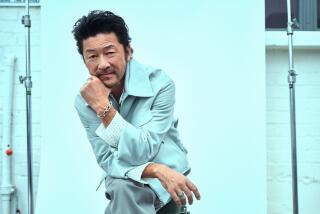MARTIAL ARTS GLOSSARY
- Share via
Just as in baseball, you can’t tell the key martial arts players without a scorecard. The following names and terms are essential if you’re to become a martial arts aficionado:
BRUCE LEE: He towers over anyone else in martial arts. His “Fists of Fury” (1971) was the first big hit in the genre, and his “Enter the Dragon” (1973) remains the martial arts film to which all others aspire. Lee became the first (and only) Chinese-American film superstar. He also taught the martial arts to Steve McQueen and other stars, and attempted to inject some philosophy into every film. At his death in 1973 he was mourned worldwide, and has become the James Dean of the martial arts film.
CHUCK NORRIS: The “White Bruce Lee,” known for his skills as a kickboxer (he was a real-life champion), has been a hit with films like “Good Guys Wear Black” (1974) and “Lone Wolf McQuade” (1983). No match for Lee in either looks or charisma (Norris’ line readings are generally amateurish, and he has no sense of self-mockery), he has nonetheless been a big hit with the action crowd. In last year’s “Code of Silence,” however, Norris showed a strong inclination to tone down the martial arts in an attempt to grab a larger, action-oriented audience. He appears to have been successful.
SHO KOSUGI: Current star of the Ninja films. Another former martial arts champion, Kosugi’s fighting skills, with weapons ranging from samurai sword to throwing stars, are supreme. Featured as a supporting character on “The Master” TV series, he can currently be seen in “Pray for Death,” his latest Ninja hit.
NINJA: The hot martial arts sub-genre has a basis in fact. During the 15th and 16th centuries, Japan was wracked by civil wars. Ninja were assassins hired by various warlords to bump off their enemies. They were experts in weaponry, disguise, and the “art of invisibility.” Ninja disappeared from the scene in the late 19th Century, when Japan was opened up to Western influence.
SHAOLIN TEMPLE: The Shaolin Temple is to martial arts films what Eden is to the Bible: the place where it all began. Founded in A.D. 495, Shaolin was the home of the Zen Buddhist school, well known for its mental and physical disciplines. During the 6th Century, a Chinese emperor beset by enemies asked the Shaolin monks, known for their fighting skills, to come to his aid. Thanks to the monks, the emperor emerged victorious. Hundreds of martial arts films either feature Shaolin in their titles (“Little Heroes of Shaolin Temple,” “Ten Tigers of Shaolin,” “Shaolin Drunk Monkeys,” etc.), or characters who are Shaolin-trained (in the “Kung Fu” TV series, David Carradine was trained in the Shaolin Temple). The Shaolin Temple was restored in the 1970s by the Chinese government, and is once again a martial arts center.
More to Read
Go beyond the scoreboard
Get the latest on L.A.'s teams in the daily Sports Report newsletter.
You may occasionally receive promotional content from the Los Angeles Times.









